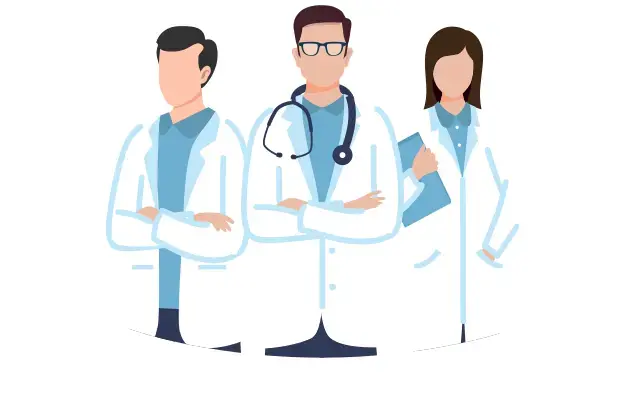Diagnosis and Treatment Of External Piles
External Piles Diagnosis
A doctor will ask your health history and symptoms to diagnose external piles. They will also likely do a physical exam. In the case of external piles, they can see the piles by examining the area around the anus.
Your doctor may also perform an anoscopy and digital rectal exam to check for problems inside the anal canal and rectum, including internal hemorrhoids.
During a digital rectal exam, the doctor inserts a gloved, lubricated finger into the anus to feel abnormalities. During the exam, the patient may experience some discomfort and some bleeding from the rectum.
During an anoscopy, the doctor will insert an anoscope into the rectum that allows them to see abnormalities. The patient will be asked to be in the fetal position on the table and bend forward. The anoscope will then be inserted by lubricating with a gel into the lower gastrointestinal tract through the anus. The scope used here is made of plastic or stainless steel.
If you also have rectal bleeding, the doctor will ask you to get a sigmoidoscopy or colonoscopy to rule out colorectal cancer. These methods will also detect any internal hemorrhoids.
External Piles Treatment
If you are experiencing pain and discomfort around your anal region, your doctor may advise using over-the-counter pain relief medicines, such as ibuprofen, acetylsalicylic acid, or acetaminophen.
Other ways to treat external piles include:
Home remedies
You can use various home remedies to help with external piles. Here are some safe and successful at-home remedies for external piles:
- Cold compress. Wrap ice in a cloth and apply it to your piles for not more than 15 minutes at a time. It can significantly decrease inflammation and pain.
- Sitz bath. A sitz bath is done by soaking the bottom in warm water. Patients use a small tub made to fit over the toilet, which you can fill with warm water and sit in several times a day to help soothe external piles. Some doctors also advise adding unscented Epsom salts to the water.
- Topical ointments or wipes. Some patients use ointments or wipes made with naturally derived ingredients, like witch hazel and aloe vera, to help relieve external piles, inflammation, and pain.
- OTC creams. OTC topical medications are also very effective in reducing pain and swelling.
However, home remedies cannot treat piles effectively. To treat piles effectively and safely, one needs to undergo surgery. Contact your doctor if you are experiencing severe pain, if symptoms have not gone away after 1 week of treatment at home, or if you are experiencing bleeding from the rectum.
Surgical treatment
Laser and stapler surgery are the two most effective surgical treatment options for external piles.
- Laser surgery for piles (laser hemorrhoidectomy)- This surgery uses high-energy light to cut or burn the expanded pile’s tissue. Laser surgery is an advanced and safe surgical procedure because it is less painful and has fewer complications.
- Stapler Surgery (stapled hemorrhoidectomy)- Stapler surgery for piles is a relatively new and increasingly popular surgical procedure. This surgery does not remove piles but treats them by inhibiting blood flow to the tissue. In this procedure, the doctor removes enlarged piles and then staples the remaining tissues to the lining of the anus again.
 Aditya Birla Health Insurance Co. Ltd.
Aditya Birla Health Insurance Co. Ltd.
 National Insurance Co. Ltd.
National Insurance Co. Ltd.
 Bajaj Allianz General Insurance Co. Ltd
Bajaj Allianz General Insurance Co. Ltd
 Bharti AXA General Insurance Co. Ltd.
Bharti AXA General Insurance Co. Ltd.
 Future General India Insurance Co. Ltd.
Future General India Insurance Co. Ltd.



















.svg)




